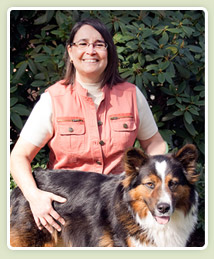Submitted by Mary Jo Buza
 Did you know that at one time people were afraid to eat tomatoes? Called ‘wolf pears’ tomatoes were scorned because it was thought that the red fruit was poisonous. Lucky for us, some careless or perhaps fearless person decided to eat the tempting red fruit and lived! Today, the tomato is a vegetable we consistently use in our kitchens. Could you image a summer salad without tomatoes?
Did you know that at one time people were afraid to eat tomatoes? Called ‘wolf pears’ tomatoes were scorned because it was thought that the red fruit was poisonous. Lucky for us, some careless or perhaps fearless person decided to eat the tempting red fruit and lived! Today, the tomato is a vegetable we consistently use in our kitchens. Could you image a summer salad without tomatoes?
As much as we love tomatoes, growing them in the South Sound regions is a frustrating endeavor. If the crop is not destroyed by the dreaded late tomato blight, our cool summer temperatures slow the ripening so much that your bumper crop of tomatoes are still green in September.
I usually plant tomatoes in early June. But with the spectacular warm May, savvy gardeners got a jump on the weather and planted early with little risk of a late frost. Here are my secrets to growing tomatoes in the South Sound and attain the coveted ripe, red fruit.
Tip #1 Grow the Crop under Clear Plastic:
The best crop of tomatoes I have ever seen were grown on the south side of a house with an attached a wood frame for the plastic. The plastic increases the temperatures enough to ripen fruit and extends crop production long after the first frosts in September. The plastic will also keep the rain off which inhibits the late tomato blight.
Tip #2 Use Soaker Hoses:
Overhead watering promotes the dreaded late tomato blight. The blight lives dormant in the soil waiting for contact with the leaves of your tomato plant. Tomatoes are infected when water splashing from the soil hits the leaves. The tiny drops of water carry fungal spores from the soil to the leaves. Using soaker hoses eliminates this potential problem. Another secret to growing tomatoes is to reduce the amount and frequency of watering once the fruit begins to ripen sometime in August. This will hasten the ripening process.
Tip#3 Stake Tomato Plants:
Why go to all the trouble to stake tomatoes? There are several reasons. One, you can grow more tomatoes in a smaller space; plants can be set as little as 24 inches apart. Second, the fruits tend to ripen earlier and are larger. Third, the tomatoes have better air circulation which decreases disease problems. And lastly, growing tomatoes on stakes keeps them out the reach of slugs
Tomatoes are broken into two classifications: determinate and indeterminate. Tomatoes suitable for growing as a single vine are the indeterminate varieties. Determinate varieties are bushier and are not suitable for staking or trellising. Indeterminate varieties grow more like a vine but require training.
The ABC’s of Growing a Tomato Plants as a Vine
Place the Stakes
It may be hard to imagine that your puny four-inch tomato plant will need a stake, but don’t be misled. Once the plant sets fruit it will need a sturdy support. A 2×2 wooden stake about eight feet long cut to a point at the bottom works best. Some lumber yards will cut the points, but you will need to ask.
To avoid root damage, place the stakes before you set out your transplants. Sink the stake about two feet into the ground. This provides enough stability to prevent the plants from falling over when heavy with fruit.
Tying the Plants
Tying the plants is necessary because indeterminate tomatoes are not a true vine and have no way to support them. Any coarse twine will work. Be careful not to tie the plants too tightly and cut into the stems. You will be surprised at how fast your tomatoes grow. I check and tie my plants about once a week.
Pruning
The concept of pruning tomato plants is baffling. But a staked tomato is best grown as a single stem. In each leaf axil, where the leaf stem joins the main stem, a lateral shoot will grow. These lateral shoots need to be removed, before they grow longer than an inch or two. I use my fingers to snap off the lateral shoots. Fingers actually work better than pruners or a knife. I check and prune out lateral shoots once a week.
Pinching
Once the plant has grown to the top of your stake, prune out the growing tip. This will direct the plant’s energy into ripening the fruit. This will accelerate the ripening process and increase the size of the fruit.
Author Mary Jo Buza, is a landscape designer she has more than 25 years experience maintaining, designing, and teaching gardening in the South Sound region. For more information on a custom landscape design or consultation call 923-1733. Check out her website: www.maryjobuza.com.




















































